Panasonic Lumix DMC-GX7 Mirrorless Camera Review
The GX7 is the latest model of Panasonic’s GX series and replaces the GX1. This Micro Four Thirds (MFT) camera has a new sensor with 16MP resolution and a lot of modern features, such as the WLAN system. The camera design has a stylish, somewhat retro look and design.
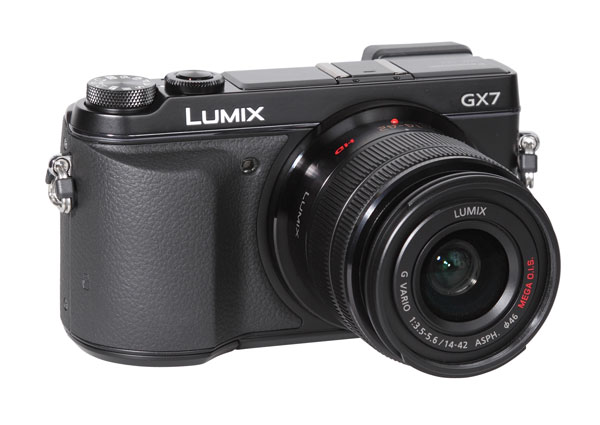
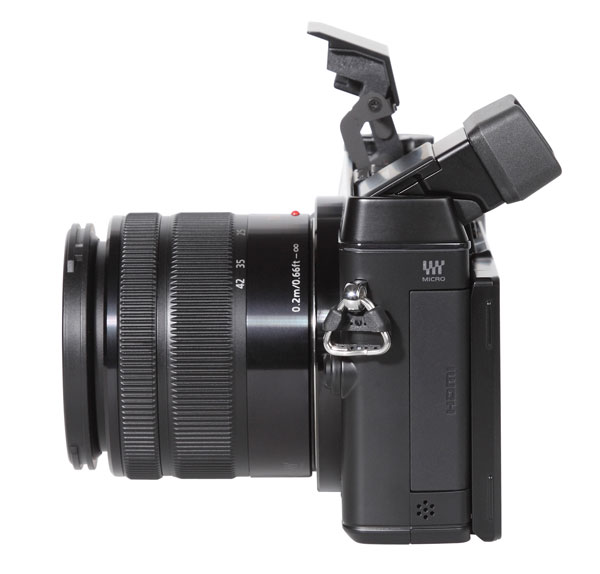
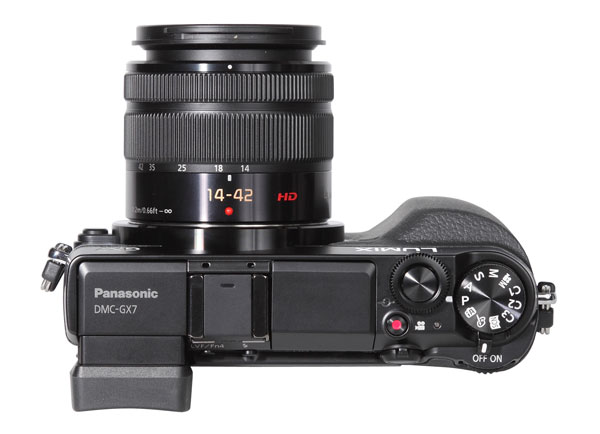

The electronic viewfinder has an extremely high resolution (2.76 million RGB dots) and is tiltable (upward by 90 degrees). This allows for a comfortable and unobtrusive shooting style which can be important for endeavors such as street photography.
One of the most important features of the GX7 is its image stabilizer system. While Olympus offered its MFT cameras with a built-in system right from the start of the digital PEN series, Panasonic had applied its OIS technology in the lens systems. The GX7 now offers both lens and sensor stabilization: when you use a Panasonic lens with their OIS system the GX7 will detect this lens and will deactivate the integrated stabilizer. When you use a lens without a stabilizer, it will activate its own sensor shift system. This helps users working with third-party lenses and/or older lens systems that can be mounted to the GX7 by simple and very inexpensive adapters.
Manual focusing with the GX7 is very easy. Due to the very high resolution of the electronic viewfinder users will see a very clear and crisp image. The camera offers two additional features for manual focusing: the first is a magnified area in the viewfinder (“focus loupe”) which helps focusing on very small details. In contrast to most other digital cameras with an electronic viewfinder you can change the position of this magnified area by using the touchscreen (simply touch on the desired area). This is very helpful if you wish to focus on an object which isn’t located directly in the center of the image (the eyes in a portrait shot, for example). The second helpful feature is “focus peaking” which shows a blue overlay on contrast lines when these areas achieve focus. In addition, the automatic AF system is very fast and very reliable, even in dark conditions. The camera also offers AF tracking and face detection.
The camera has numerous real and virtual function buttons. The user can define the four “real” Fn buttons on the body of the camera; Fn buttons 5 to 9 can be activated on the touchscreen to get direct access to the most important parameters. The touchscreen is also fully integrated into the GX7’s operational concept. Two setup dials (one located directly at the shutter release button, the other on the body’s back and accessible with the thumb of the right hand) allow the user to change aperture size and shutter speed directly, or to navigate through the menu.
Comments On Still Image Quality
Color: The Panasonic GX7 showed very good color results. The automatic white balance system showed very neutral images and placed nearly all gray test patterns in the center of the result chart. Only the brightest gray test pattern shows a shift into the yellow and green direction. The level of color errors is very low and nearly all colors show only a little shift from their given values, with only some blue nuances displaying a mentionable aberration. The saturation is nearly perfect (104.5 percent) and the skin tones are reproduced very naturally.

Sharpness: The resolution results for the GX7 are very good. The Panasonic reproduced the ISO 12.233 chart with 3057 lines in picture height, which is a very good result for a camera with a nominal resolution of 3448 lines per picture height. The good performance is partly a result of the electronic sharpening filters that cause an “overshot” effect of 19.3 percent, a bit high for a system camera. The standard test box shot shows a somewhat soft character and we noticed the overshot effects on the most extreme contrast lines.
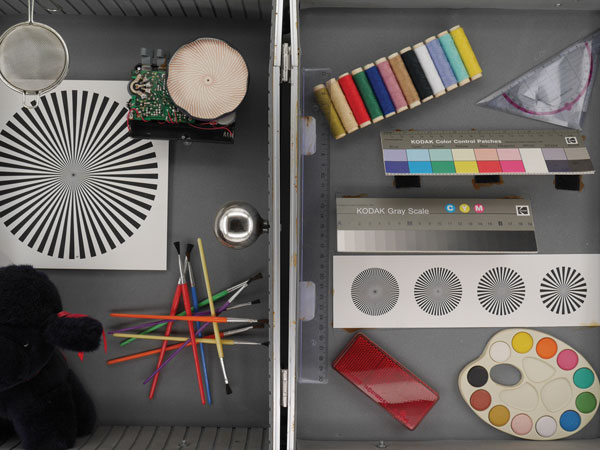
Noise: The camera showed a very good performance in our noise and dynamic range tests. It shows very clean and crisp images at ISO 200 to ISO 1600. In higher ISO speed settings like ISO 3200 and ISO 6400, we noticed some little noise effects, but it gets really annoying at ISO 12,800 and ISO 25,600. We feel it would be helpful to use the “ISO limit” function, which allows the user to limit the maximum setting in ISO-Auto mode.
The dynamic range maximum is 11.5 f/stops, which is very good. The camera reaches this maximum at ISO 200 but the dynamic range declines with higher ISO settings yet isn’t lower than 10 f/stops up to ISO 3200 mode, which is a very good result.
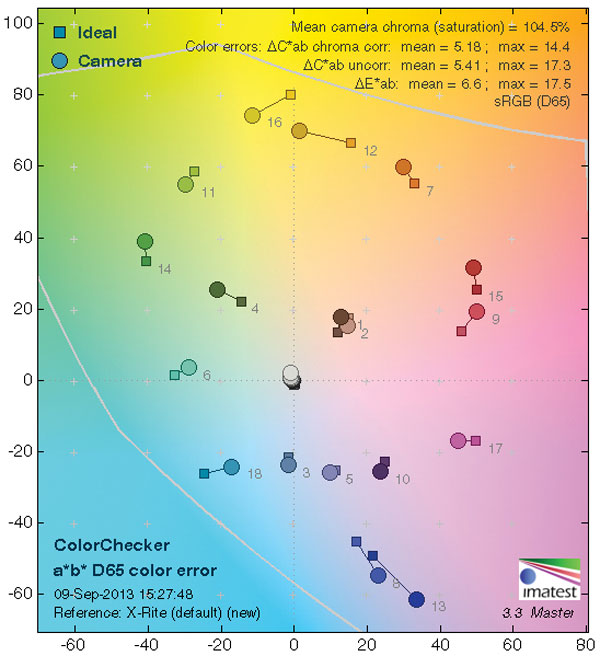
Comments On Video Functions
The GX7 offers numerous video modes: it records up to 50/60 progressive frames per second in Full HD resolution and in AVCHD mode with a high bit rate of 28 Mbit/s. For “standard” video recording it offers a 50i mode with 17 Mbit/s, similar to most camcorders. In addition, the GX7 can deliver a 25p mode with 24 Mbit/s and a 24p mode (Blu-ray compatible) with 24 Mbit/s. The camera also offers MP4 modes, including high bit rate modes with 50 progressive frames and 28 Mbit/s.
The duration of videos is limited to 29 minutes and 59 seconds in AVCHD mode (note: in Europe, for “camcorders,” one has to pay a higher custom duty than for “photographic cameras”) or will stop when the camera reaches the 4GB limit (in MP4 mode).
The camera allows the user to choose all standard exposure modes like P, S, A, and M with the “manual movie” setting on the mode dial. Just as with the still photo mode, the photographer can use two dials to change the exposure parameters, which is very handy. The photographer can also change ISO speed settings in video mode, but the maximum ISO speed is limited to ISO 3200.
The camera offers manual focusing in video mode and assists focusing with a magnified section of the viewfinder image. In addition, it supports “focus peaking.” Manual focusing is very comfortable due to the extremely high resolution of the electronic viewfinder.
The AF system of the GX7 worked very well and showed soft and continuous alignments while recording videos. Focus tracking helps to keep a moving object/subject in focus, while touchscreen operation helps to set up the focus point. You can even produce a “focus shift/adjustment” between two image elements by modifying two focus areas while recording videos.
The built-in stabilizer (sensor shift) lets you use third-party lenses such as the famous Voigtländer Nokton 25mm f/0.95 (MFT), for example.

Comments On Video Quality
The camera showed an excellent performance in the resolution test. It reproduced the test chart with 968 lines per picture height, which is a superb result. Video sharpness is clearly increased by an intense sharpness filtering and digital contrast enhancement, but showed very impressive results nonetheless. There are only minor aliasing or moiré effects in our test clips, even though the sharpness is so high.
The standard colors of the GX7 show a very neutral look, perhaps with a bit cooler touch than videos taken with Canon cameras, for instance. The automatic white balance system showed only a very minor shift into the yellow direction and most colors are placed nearly exactly on their given values.
The noise results are good: videos taken at ISO 200 to ISO 800 had a very smooth and clear look. At ISO 1600 we noticed some noise artifacts and at ISO 3200 the noise artifacts are clearly visible. (Perhaps this is the reason why the camera doesn’t offer higher ISO speed settings in video mode.)
Scorecard
Pro
+ High-resolution images
+ Compact and very handy
+ Swivel LCD and very high-resolution viewfinder
+ All manual settings (focusing, exposure setups, and more) can be done in a very comfortable way
+ First Panasonic G camera with built-in image stabilizer
+ High-class finish
+ Wi-Fi module and NFC system
+ Very good video results
Con
- High price for a compact system camera
- Swivel LCD not fully articulated
The Panasonic Lumix DMC-GX7 with a 14-42mm II silver kit lens has a list price of $1099.99. For more information, visit www.panasonic.com.
Lab results and test images by BetterNet, our TIPA-affiliated testing lab. Edited by George Schaub.
















































